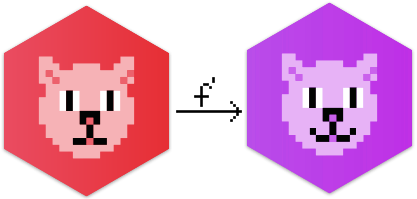
OK, you came to the conclusion that type-safety is good. It helps you get things done in a safer manner, at least for whatever you’re working on at the moment. So you started using types more than before to describe what a piece of code does without the need to run. In another word, to bring forward unwanted errors.
One of the first things you might have found quite handy when started using
Scala is Option type, after which it simply no longer makes sense to deal with
nulls.
Have a look at this piece of code for instance:
def getUser(id: Int): Option[User] = ???
getUser(10) match {
case None => println("User not found")
case Some(user) => println(s"User: $user")
}
It obviously feels safer than a null checking if block. The author of
getUser method lets the consumer know what they should expect to happen when
they call it. The result would be either a User object or nothing. On the
other hand, thanks to the pattern matching, the consumer would be able to handle
the possible results in an elegant way. Even better, the compiler would warn you
(which can be converted to an error) if you forget to check all possible cases.
From a pragmatic point of view, one would argue that Scala is all about scalability and asynchronous programming is one of the fundamentals of scalability.
Instead of having some fancy keywords, magic and hiding things (like C# 5 and
others), Scala has chosen a direct answer; Future type. As a result, it’s more
likely that you’ll see methods returning Future of something in real-world
idiomatic Scala codebases:
def getUser(id: Int): Future[Option[User]] = ???
getUser(10).map {
case None => println("User not found")
case Some(user) => println(s"User: $user")
}
Again, method signature explains everything. The only difference is that it’s
async and the consumer uses map to match the result. So far so good.
We always see this kind of cool and small code samples in fancy programming languages but real-world software is not that simple and isolated. You always need to combine things together and that is where those lovely code samples don’t look shiny anymore.
Consider the following example where we want to find the user country by its ID asynchronously:
def getUser(id: Int): Future[Option[User]] = ???
def getCity(user: User): Future[Option[City]] = ???
def getCountry(city: City): Future[Option[Country]] = ???
def getCountryByUserId(id: Int): Future[Option[Country]] = {
getUser(id) flatMap {
case None => Future.successful(None)
case Some(user) =>
getCity(user) flatMap {
case None => Future.successful(None)
case Some(city) => getCountry(city)
}
}
}
Despite the method signatures expressiveness, it’s not that beautiful anymore. Although there is a pattern here, it doesn’t look like as smooth and readable as before.
This is one of the most common situations for a developer who is new to functional programming where a library like Cats comes in handy.
Meet OptionT. It basically is a container type wrapping two other types;
another container type like Future and a generic type like User
(OptionT[Future, User]). And it provides more abstraction. Let’s rewrite the
above sample with OptionT:
def getCountryByUserId(id: Int): Future[Option[Country]] = {
val result = for {
user <- OptionT(getUser(id))
city <- OptionT(getCity(user))
country <- OptionT(getCountry(city))
} yield {
country
}
result.value
}
Far more beautiful, concise and readable.
Now if we go a little bit further, we can do the same with Either. There has
always been an argument about using Either vs exceptions when dealing with
Future. I don’t believe that all exceptions should be modelled as Either,
but even for those which makes sense, many developers would argue that Either
increases the complexity as you need to extract inner types to have access to
the inner values. Which is true when you’re dealing with real-world
applications. But the good news is that Cats support the same concept for
Either by EitherT.
So the following code:
def getUser(id: Int): Future[Either[String, User]] = ???
def getCity(user: User): Future[Either[String, City]] = ???
def getCountry(city: City): Future[Either[String, Country]] = ???
def getCountryByUserId(id: Int): Future[Either[String, Country]] = {
getUser(id) flatMap {
case Left(err) => Future.successful(Left(err))
case Right(user) =>
getCity(user) flatMap {
case Left(err) => Future.successful(Left(err))
case Right(city) => getCountry(city)
}
}
}
Can be rewritten using EitherT like this:
def getCountryByUserId(id: Int): Future[Either[String, Country]] = {
val result = for {
user <- EitherT(getUser(id))
city <- EitherT(getCity(user))
country <- EitherT(getCountry(city))
} yield {
country
}
result.value
}
I’d say Future[Either[String, Option[User]] would be a more realistic type to
deal with, but it needs its own separate blog post which will also show that
Cats or Scalaz are not always the answer to everything and sometimes there are
simpler ways to make the code clean and readable.
Conclusion
You don’t need to know about monads and category theory to start using Cats.
Types like OptionT and EitherT are called monad transformers but you don’t
need to know their names before start using them.
This doesn’t mean that you should ignore those theory concepts. The rule of thumb for learning abstract concepts is to use metaphors, and you tell me, what metaphor can be better than the real-world use cases of that abstract concept? Note that it's not just about Cats or Scalaz; most of the time, we start with the solutions rather than starting with a firm understanding of the actual problem.